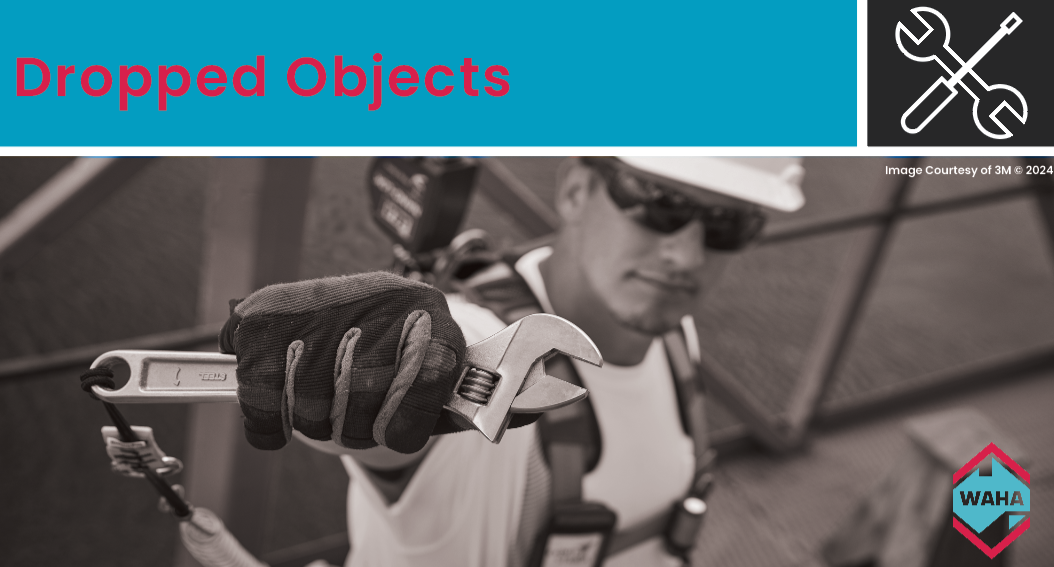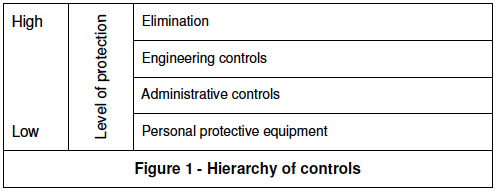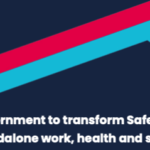
Falls from height continue to be a major cause of serious accidents in the workplace. Notwithstanding the overall improvement of health and safety at work over recent years, falls from height still occur. Indeed, falls from height were one of the principal cause of fatalities in the 2022 period, comprising 9% of all fatalities according to Safe Work Australia figures.
What makes 2022 a particularly disturbing year, was that 9% of fatalities also occurred from dropped or falling objects.
We spend a significant amount of time studying and implementing control measures to keep workers safe; the risk presented by dropped objects can be managed by adopting an hierarchical approach (see Figure 1), with the level of protection reducing as the lower levels are reached.

This should a familiar hierarchy, as the framework set out by the ‘hierarchy of fall protection’: Avoid, Prevent, Mitigate.
i.e. minimise the distance and consequences of a falling or dropped object.
Some measures are ‘collective’ (and ‘passive’), e.g. safety nets. Others are ‘personal’ (and ‘active’), e.g. tool lanyards. It is important to select suitable equipment, taking account of the mass of the object being retained and the situation in which it is to be used.
There are two types of falling or dropped object:
(a) Static: An object that may drop from its previous static position under its own mass, e.g. a light fitting that drops due to its fasteners coming loose over time.
(b) Dynamic: An object that drops from its previous static position due to the force applied by a person, wind, equipment, machinery or moving object, e.g. an object being knocked off a platform and dropping to a level below.
ELIMINATION
Where possible, the elimination of a hazard – or avoidance – must be the preferred option. There are many steps you can take at the beginning of your work day, and throughout, to ensure your workplace remains safe. Undertaking pre-job checks, or surveys to look for potential problems, taking the time to maintain a clean and tidy worksite. This is hugely important when returning to a site after bad weather, or on new sites, and after third party operations in the same area.
You can ensure that pockets are empty, take the time to inspect tools before starting work, checking for lanyard fixings, quality of lanyards or loose components. Consider what precautions you can take for ‘high energy’ hand tools.
Don’t take or carry too many tools or items, or consider how they can be secured and transported safely for use on site.
ENGINEERING CONTROLS
If the hazard cannot be eliminated, engineering controls are the preferred approach to risk reduction. This involved the use of equipment to reduce the potential for dropped objects (or, preferably, prevent them from being dropped), or to reduce the risk if an object does fall.
Examples include:
• temporary covers being placed around and/or over openings;
• work clothing has pockets these should be capable of being securely closed; preferably, don’t put loose items in pockets;
• tools being transported in securely closed containers, e.g. when being lifted between levels;
• lightweight hand tools, communication equipment, etc. being tethered to the technician;
• replacing a hand held torch with a helmet mounted head torch;
• heavier tools and components being separately tethered;
• using safety netting to catch tools or equipment that cannot be tethered, e.g. bolts;
• providing ‘hard’ barriers, toe boards, etc. to form an exclusion zone, where it is not possible to prevent dropped objects.
ADMINISTRATIVE CONTROLS
Administrative controls, to be used in conjunction with other controls in the hierarchy, involve providing:
• information and warnings to technicians about hazards that are present;
• procedures and instruction on how to carry out the work safely;
• supervision to ensure that any procedures are being followed;
• management processes to determine any ‘lessons learnt’.
Examples of administrative controls include:
• hazard awareness, e.g. at induction;
• warning signs, to highlight any hazards to the workers;
• planning activities to avoid situations where work is being carried out at multiple levels simultaneously;
• lookouts to prevent people entering an area below where technicians are working;
• high levels of workplace housekeeping, i.e. keeping works areas clear of loose material or objects;
• operating systems to check that all tools and components have been removed from, or secured in, the work area prior to completion of the task;
• processes for reporting, investigating and learning from hazardous observations and incidents involving falling objects (and developing a culture in which reporting is encouraged).
PERSONAL PROTECTIVE EQUIPMENT
This is the last method of protecting an employee.
Industrial safety helmets provide limited protection only, due to the high level of kinetic energy that falling and dropped objects possess. A helmet protects the head only, so other areas of the body are unprotected from dropped objects and serious injuries can easily be suffered, e.g. face.
For more information:
IRATA International Topic Sheet No. 11
Safe Work Australia Key Work Health and Safety Statistics, 2023






